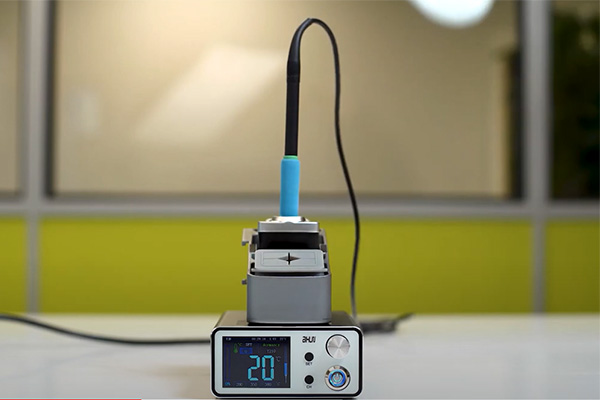
Are you looking for the best SMD soldering station for your needs? If so, you’ve come to the right place. In this article, we’ll discuss the concerned questions of SMD soldering stations , and our top picks for the best SMD soldering station.

1. Reflow soldering
This method uses a combination of heat and pressure to melt the solder and form a strong bond. Reflow soldering is the preferred method for most SMD components, as it is fast and reliable.
2. Wave soldering
This is a less common method, but it is still used for some SMD components. Wave soldering uses a wave of molten solder that passes over the components, creating a strong bond. This method is usually used for larger components, as it can be difficult to control the heat and pressure with smaller components.
3. Hand soldering
This is the most traditional method. Hand soldering requires a great deal of skill and precision, as the heat and pressure must be carefully controlled to create a strong bond. This method is best for experienced solderers, as it can be difficult to get right.
SMD work stations are used to provide a safe and efficient environment for soldering surface-mount components onto printed circuit boards (PCBs). They are used in a variety of industries, including electronics, automotive, and aerospace. SMD workstations are typically equipped with a soldering iron, a vacuum pickup tool, and a microscope or magnifying glass. The soldering iron is used to heat and melt the solder, while the vacuum pickup tool is used to place components onto the PCB. The microscope or magnifying glass is used to inspect the work and ensure that the components are properly soldered. SMD work stations are essential for creating high-quality, reliable PCBs.
The answer is “Yes”. Hand soldering is a process that involves using a soldering iron to heat up the metal parts of a component and melt a small amount of solder onto the connection. This technique is often used for components that are too small or too delicate to be soldered by machine.
When hand soldering SMD components, it is important to use the right tools and techniques. You will need a soldering iron with a small tip, a magnifying glass, and a pair of tweezers. The process involves heating up the metal parts of the component with the soldering iron and then quickly touching the solder to the connection. It is important to move quickly and not to overheat the component.
Hand soldering SMD components can be a tricky process, but with the right tools and technique, it is possible to achieve a good connection. If you are unsure of how to hand solder SMD components, it is best to consult a professional or watch some tutorials online.
The most basic tools needed for SMD soldering are a soldering iron, soldering station, solder, flux, tweezers, and a magnifying glass. A soldering iron is used to heat up the solder and flux to join components together. Solder is a metal alloy that melts at a low temperature and is used to make electrical connections. Flux is a substance that helps the solder to flow and stick to the components. Tweezers are used to hold small components in place while soldering. A magnifying glass is used to inspect the soldered joints for any defects.
In addition to the basic tools, there are other tools that can make SMD soldering easier and more efficient.
The temperature of a soldering iron for SMD (surface-mount device) soldering depends on the type of device being soldered, as well as the type of soldering iron being used. Generally, temperatures between 350-400°C (662-752°F) are recommended for soldering SMD components. However, it is important to consult the manufacturer's instructions for the specific type of device being soldered, as some may require higher or lower temperatures. Additionally, it is important to ensure that the soldering iron is properly calibrated to the desired temperature before use.
When shopping for an SMD soldering station, there are a few features to look for. The most important feature is the power output, as this determines how quickly the station can heat up and cool down. Look for a station with a high power output, as this will allow you to work quickly and efficiently. Another important feature is the temperature range, as this determines how hot the station can get. Look for a station with a wide temperature range, as this will allow you to solder a variety of components. Finally, look for a station with a good selection of tips, as this will allow you to work on a variety of components.
Now that you know what to look for in an SMD soldering station, let’s take a look at our top picks.
The top pick is the AiXun T420D. This soldering station has a high power output of 400W peak power and a wide temperature range of 90℃-450℃. It also comes with dual channel, a selection of tips, making it great for working on a variety of components for Professional repair shop.
The second pick is the AiXun T3A. This station has a power output of 200W and a temperature range of 100℃-500℃. It also comes with a selection of tips, making it great for precision soldering.
We hope this article has helped you find the best SMD soldering station for your needs. With the right station, you’ll be able to solder and desolder SMD components with ease. Be sure to consider the features we discussed when shopping for an SMD soldering station, and check out more high quality SMD soldering station on AiXun soldering equipment.
 WhatsApp
WhatsApp